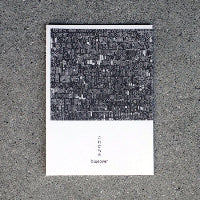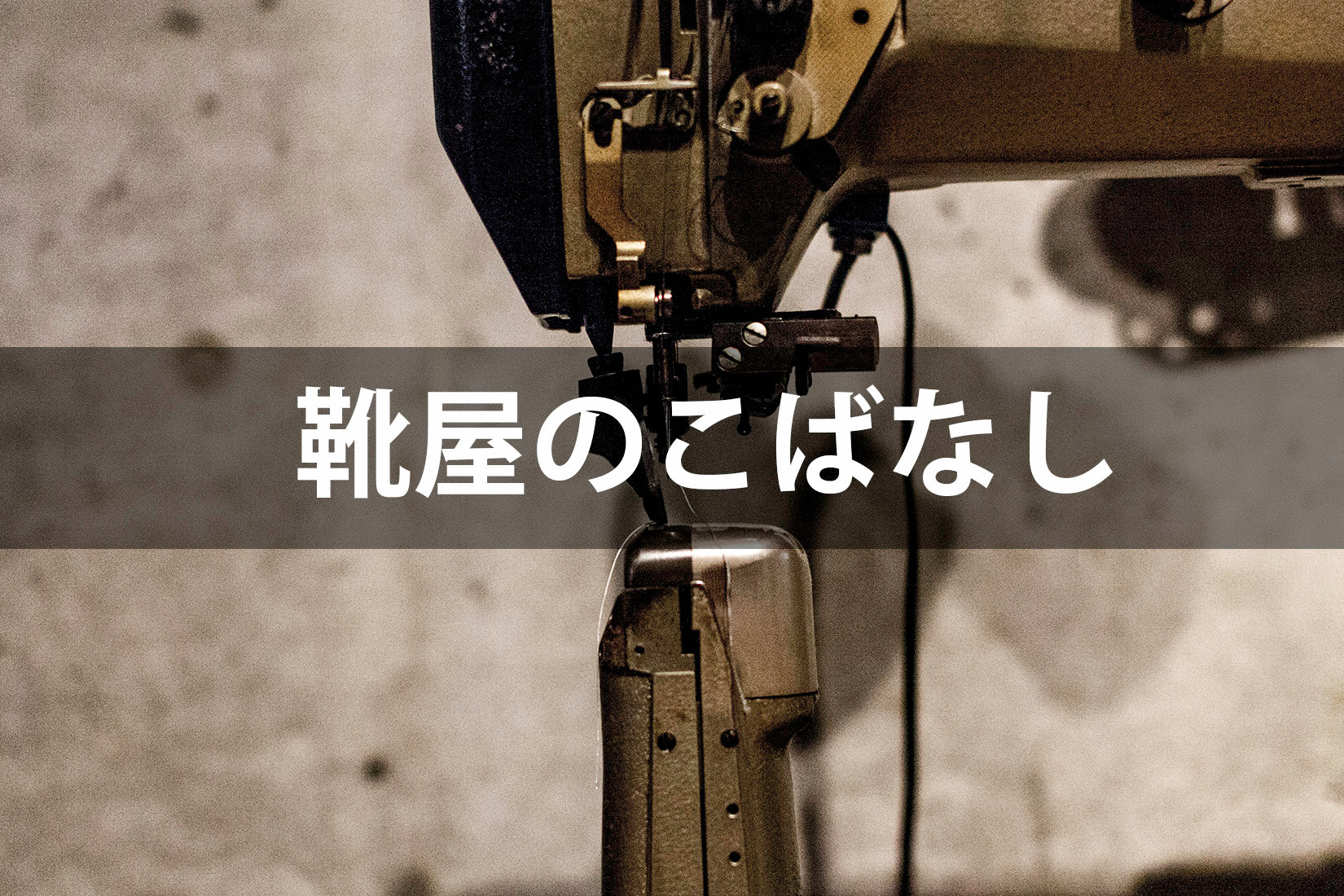Shoemaker's Story #04|My sloppy shoe care method
 |
ZUCCO Blue over sample craftsman. The shoes are made by hand, from the pattern to the sewing and shoemaking. We also handle factory arrangements and material setup. @blueover_zucco |
This series is a compilation of several notes I wrote in order to explain my work, namely making shoes, as clearly as possible.
<My lazy shoe care method>
Today we will talk about shoe care.
If you search online for shoe care methods, you'll find many proper ways to do it, so I'd like to show you how I do it as a sloppy person.
[Frequently seen shoe care methods]
- Remove dirt with a horsehair brush (black)
- Use a cleaner to remove dirt and cream that was applied during previous shoe care.
- Apply cream puff to the applicator brush and apply evenly over the entire shoe.
At that time, if the color of the shoes has faded and you want to add color, you can use colored cream puffs. - Wipe off excess cream with a rag.
- Add shine with a pig bristle brush (beige color).
I need various tools.
Horse hair brush, cleaner, application brush, shoe cream (emulsifying), rag, pig bristle brush...

Actually, this is even less. There are so many shoe care products out there that you can never run out of them.
[My shoe care method]
- Wipe away dirt with a rag
- Use a cleaner to remove dirt and cream that was applied during previous shoe care.
- Dip cream puff onto a rag and spread it evenly over the entire shoe.
- Wipe off excess cream with a rag and move the rag quickly to create a shine.
I usually use a rag. It will still look like the picture below.
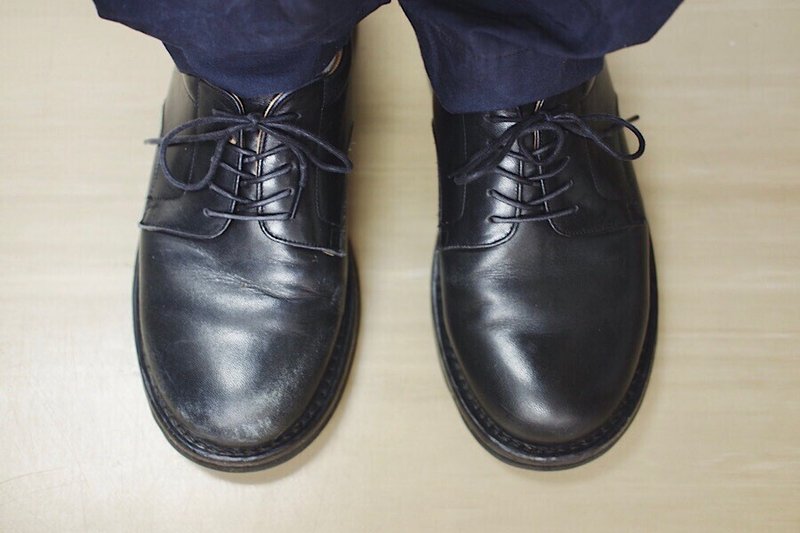
The left is before shoe care, the right is after shoe care. Those who know more about it may be scolded, but please try it if you like.
Add a waterproof spray to this and it's perfect!
Two or three colors of shoe cream are fine.
Choose an emulsifying shoe cream . Not too hard and not too soft. It has just the right amount of oil and moisture, so you can expect it to nourish and moisturize the leather.
Three colors of shoe cream is enough.
- Neutral colorless cream
- black
- Brown (slightly darker than the shoes I own)
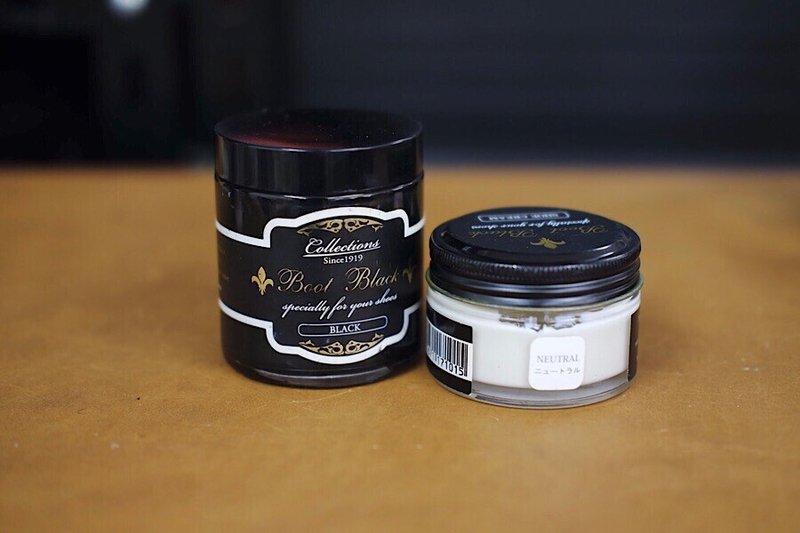
Colored creams come in many colors. But it's not a cheap purchase. The normal price is 800 yen or 900 yen, but there are creams that cost more. Therefore, commonly used colorless, black, and brown colors are sufficient. Brown doesn't have to be the worst, and if you can afford it, buy it.
If you apply a colorless cream to most shoes, the areas where the color was missing will become darker.
If you paint black shoes, even if it gets darker, it may not be enough, so try capturing the color with black cream.
If you have brown shoes and the color is still not strong enough even after applying a neutral color and the color is a little darker, apply the brown cream you have. Even if the color of the shoes and the cream are slightly different, it is often less noticeable and blends in better than expected once applied.
*Just to be sure, check in an inconspicuous area such as the arch of your foot before applying.
*Nume leather or bare-grained leather may soak in too much cream and become stained. please note.
I have purchased many colored creams. They were fun to collect, the colors were beautiful, and I collected a lot.
However, since I don't have many opportunities to use it, it becomes stiff. Such a sad ending awaits.
<Easy to care for velor (brushed leather)>
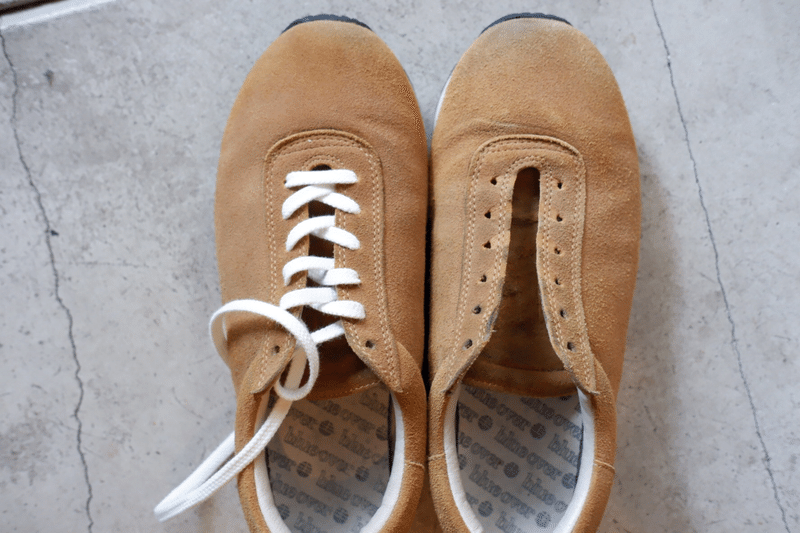
Maintaining velor is not difficult. Easier than smooth leather. It's the perfect material for someone like me who is lazy.
What to prepare

From the front right side of the photo
- Wire brush removes dust and dirt and adjusts the texture of brushed leather.
- Masking tape prevents color from transferring to the sole when using complementary colors.
- Rubber cleaner for eraser brushed leather. Use on noticeable stains.
From the rear left
- Uses complementary color agent suede color liquid. There is also a spray type. Choose a complementary color that is close to the color of your shoes.
- A nourishing leather protection spray for suede. Brushed leather is also leather, so it should be maintained just like smooth leather.
- Waterproofing spray: Any ordinary waterproofing spray will do.
procedure
First, remove the string. If I want to take care of it quickly, I don't remove it, but today I'm going to use a complementary color, so I removed the string.
remove dirt
Use a wire brush or eraser to remove dust and dirt.

A wire brush can be used to remove dust trapped between the brushed leather.
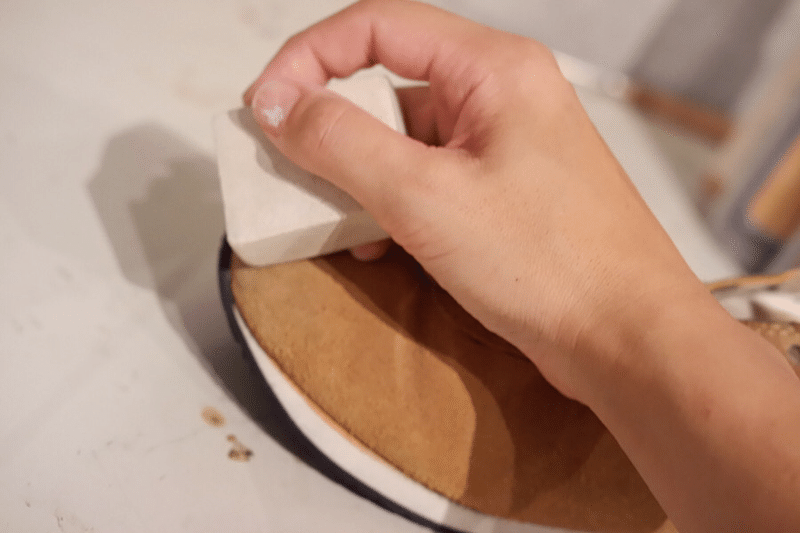
Use the eraser to remove the blackheads from the heels of your toes. It gets dirty due to rubbing against asphalt or bicycles. Many erasers also have sand mixed in, and act like a file.
*Be careful here. Be careful not to rub too hard either.
Complementary colors
Use masking tape and complementary colors .

When using complementary colors, use masking tape to prevent the colors from transferring to the soles and other parts.
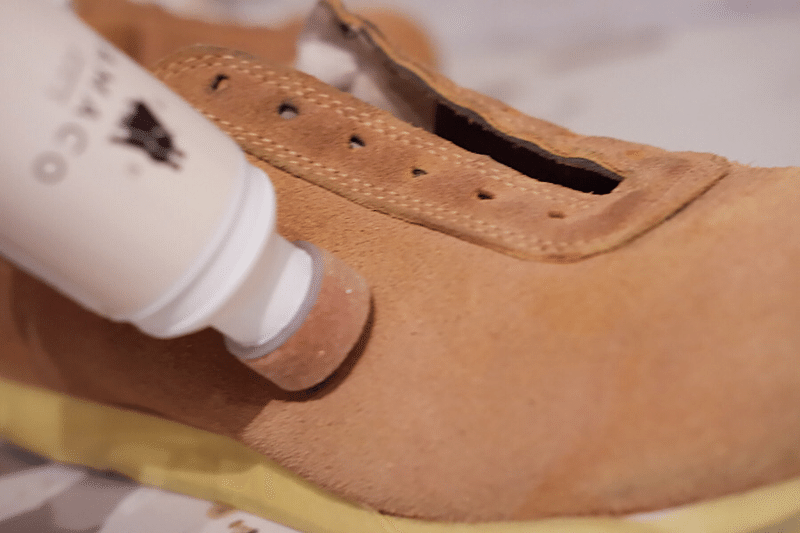
I used a liquid type complementary color agent , but a spray type is also available. With liquid, you can apply a complementary color mainly to areas where the color has faded, and it is less likely to splash onto areas where you want to avoid using other complementary colors.
*Before applying the complementary color to the entire area, try using the complementary color on an inconspicuous area such as the arch of the foot. If there is no problem, use a complementary color for the whole thing. If it's thin, layering is OK.
brush
Once the complementary colors are finished, we will arrange the coat.
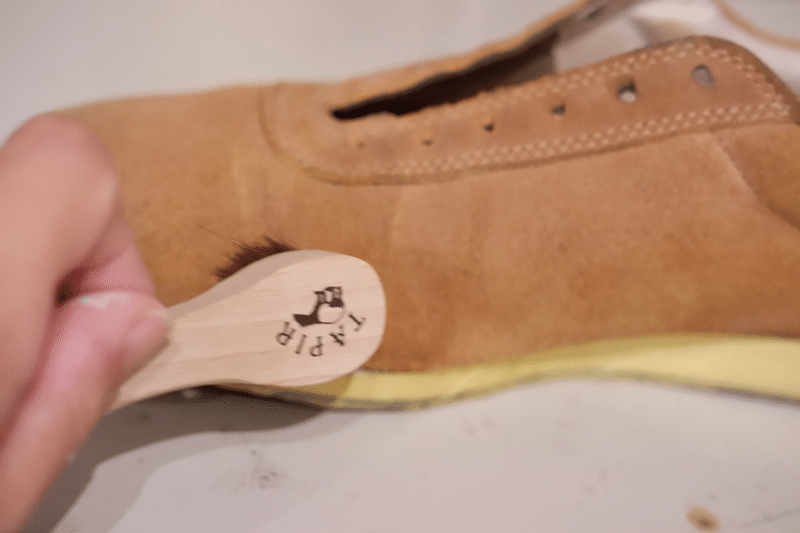
Reuse the wire brush you used to remove the dirt. Apply a complementary color and let the hair stand up in a semi-dry state.
*When the leather is completely dry, it takes force to raise the fur, which puts a lot of stress on the leather, so it is important to let it dry halfway.
Apply leather protection spray
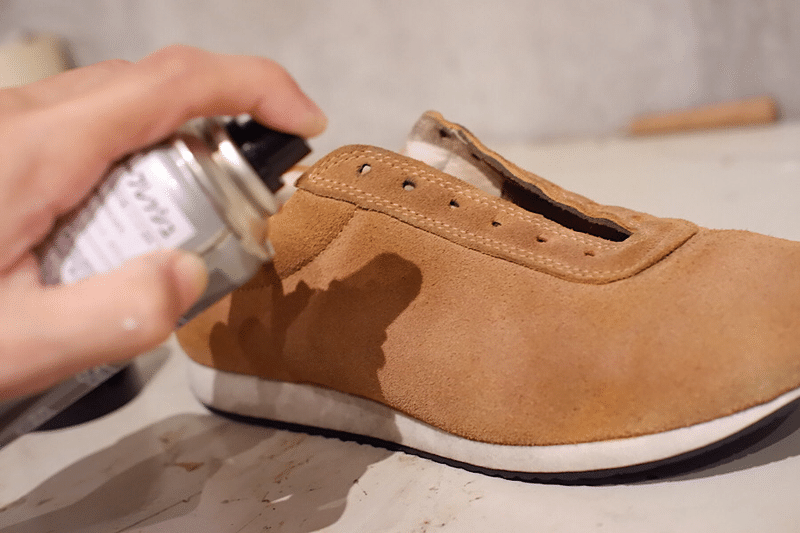
Once the complementary color is completely dry, spray the entire shoe with leather preservation spray .
The color will be darker in the area where you sprayed it. If you only spray it on one part, it will look like a stain, so spray it all over. Make stains all over.
*The color will fade when it dries, but it will be darker than before care.
Once the leather protection spray has dried, use a wire brush to smooth the fur in the same direction. easily. easily.
Apply waterproof spray
Once the leather protection spray is completely dry, apply waterproofing spray . Waterproofing spray not only protects your clothes from rain and other water, but also protects them from stains.
That was maintenance.
Completion

The one on the left is after maintenance. The one on the right is without maintenance.
I wonder if I understand. If you look closely, you can see that the dark spots on the toes on the left are gone. The color is also darker throughout.
Digression
Brushed leather does not have a silver surface than smooth leather, so it feels more susceptible to water. However, if you take proper care of it, brushed leather has a larger surface area, so it seems to be more waterproof. If you take good care of it, you can use it for a long time, and it's not difficult to care for!

